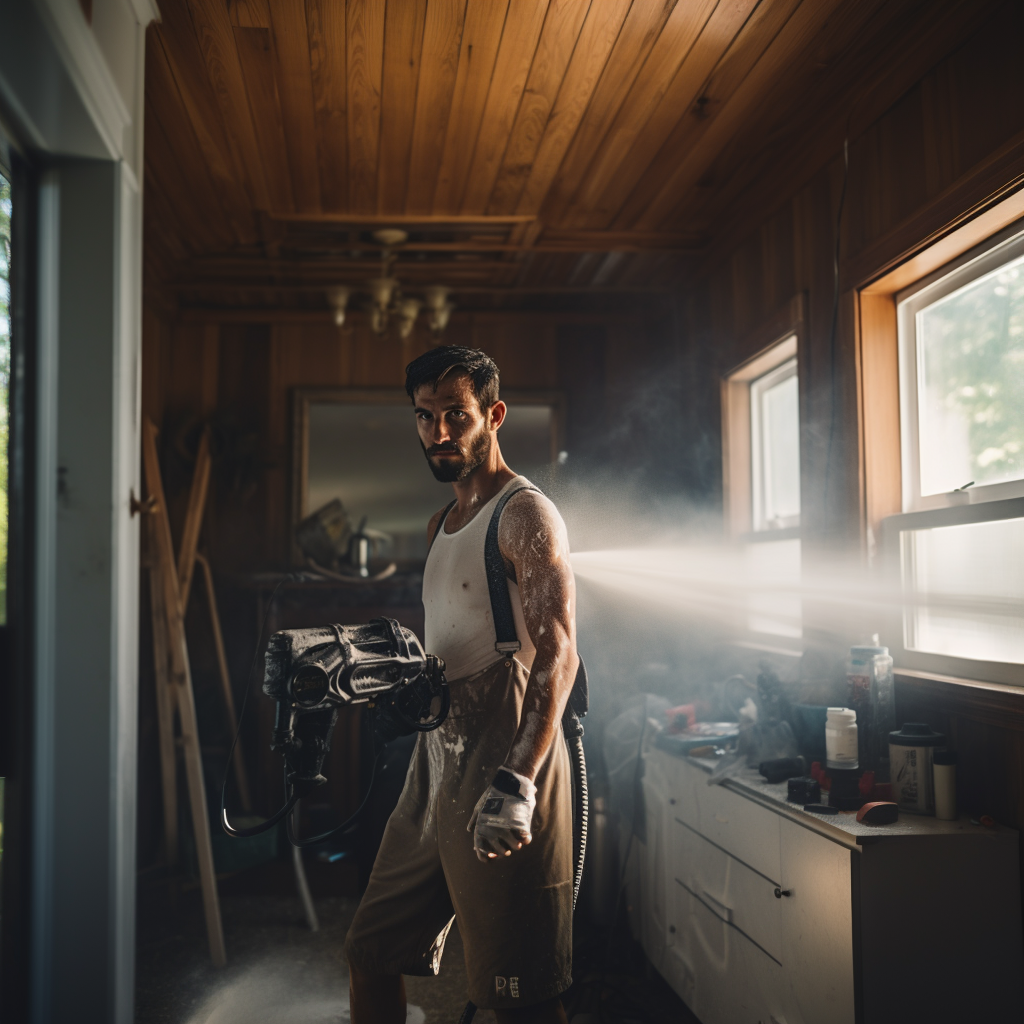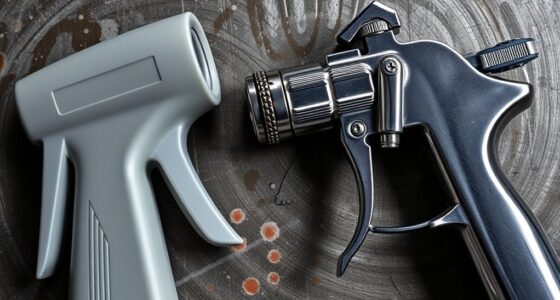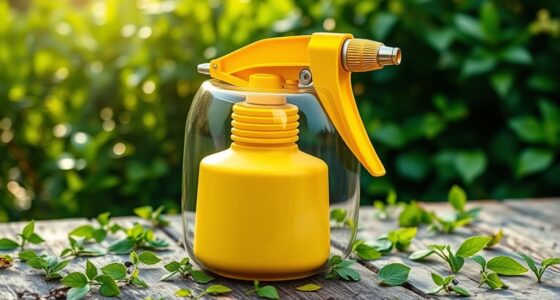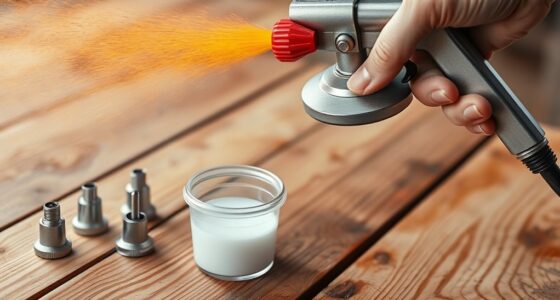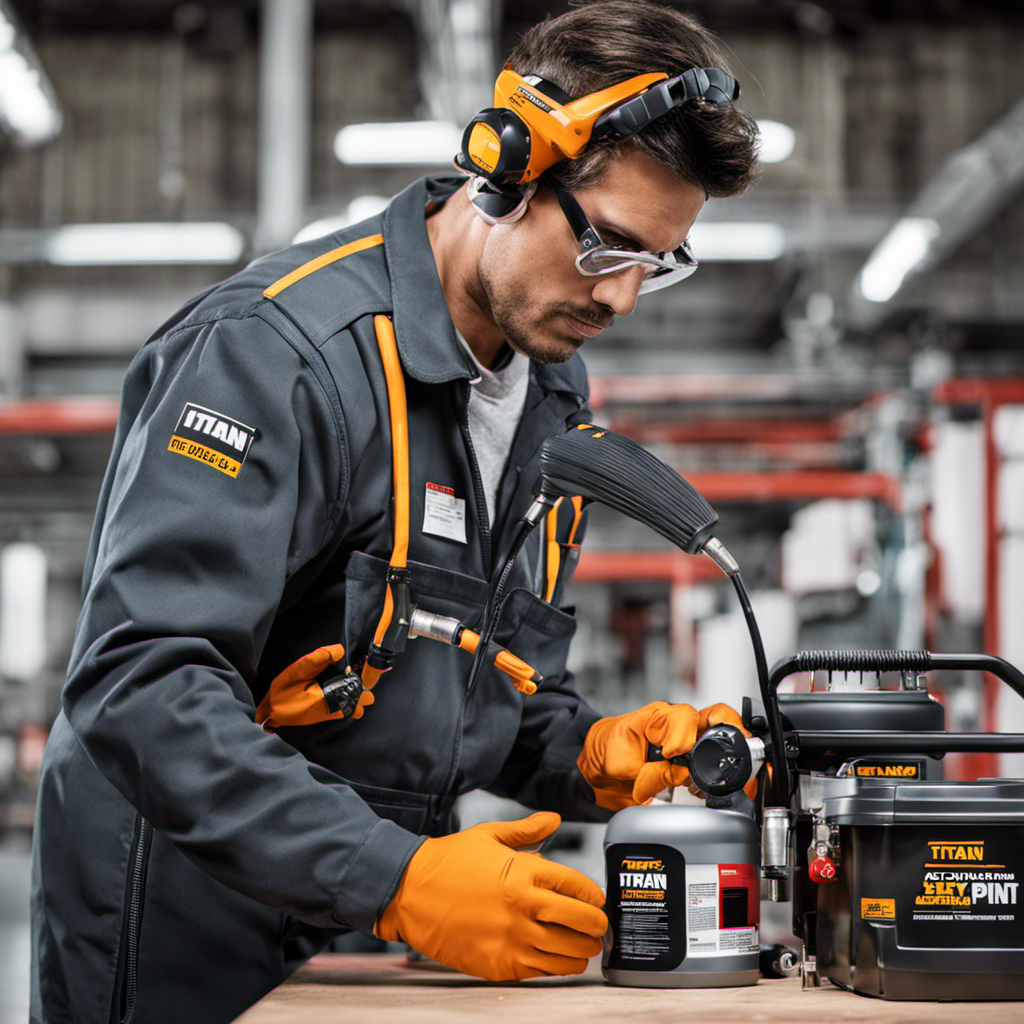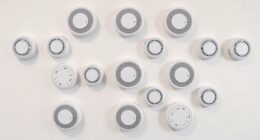For thick paints like latex and stain, high-performance spray tips are essential for smooth application. For latex, opt for larger tips around 0.017 to 0.021 inches to guarantee steady flow and even coverage without clogging. For stains, smaller tips between 0.011 and 0.015 inches work well, providing precise control. Choosing the right tip size depends on paint viscosity and the finish you want, so keep exploring to find the perfect fit.
Key Takeaways
- Use larger tip sizes (0.017–0.021 inches) for latex paints to ensure proper flow and even coverage.
- For stains, select smaller tips (0.011–0.015 inches) to achieve accurate application and control.
- High-performance spray tips designed for thick paints often feature a wide orifice to prevent clogging and maintain steady spray.
- Match the viscosity of your paint or stain with the tip size to optimize flow and minimize overspray or runs.
- Consider specialized tips with enhanced durability and smooth spray patterns for consistent results with heavy or thick coatings.
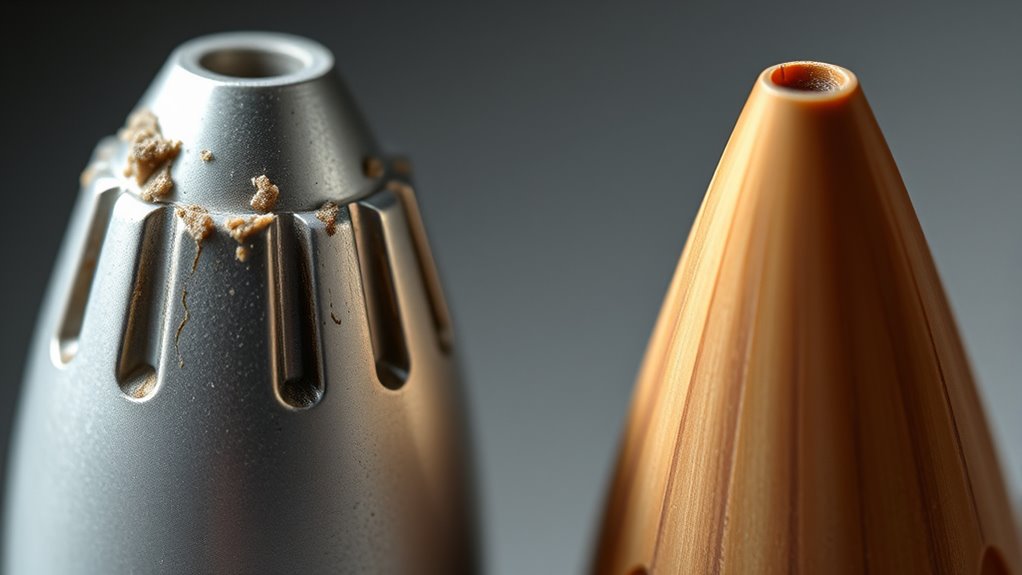
Have you ever struggled to spray thick paints evenly? If so, you’re not alone. Thick paints like latex or stain can be tricky to handle, especially if you’re using the wrong equipment. That’s where an airless spray system and the right tip size come into play. An airless spray offers powerful and consistent pressure, allowing you to apply thick paints smoothly without drips or uneven coverage. But to make the most of this system, selecting the correct spray tip size is vital. A tip that’s too small won’t deliver enough material, leading to uneven coats, while one that’s too large might cause overspray and waste paint. For thick paints, a larger tip size ensures a steady flow, providing the volume needed to cover surfaces efficiently.
When working with latex paints, which are often thicker than other coatings, you’ll want to opt for a spray tip with a larger orifice, typically ranging from 0.015 to 0.021 inches. This size allows the paint to flow freely through the tip, maintaining a consistent spray pattern without clogging. Using a tip size within this range helps you achieve a smooth, even finish and reduces the need for multiple passes. Additionally, a larger tip size minimizes the pressure required from your airless sprayer, making the process easier and more controlled. This is especially helpful if you’re tackling large surfaces or detailed projects.
For stains, which tend to be thinner but still require even application, you might opt for a slightly smaller tip—around 0.011 to 0.015 inches—depending on the stain’s viscosity. Since stains are less viscous than latex paint, a slightly smaller tip can still deliver a proper spray pattern without sacrificing coverage quality. However, if the stain is quite thick or you want a more opaque finish, bumping up to a larger tip within the recommended range will give you better results. Remember, the key is to match the tip size to the paint’s thickness and your desired finish. A properly chosen tip size combined with an airless spray system ensures you get even coverage, minimal overspray, and a professional-looking surface.
Frequently Asked Questions
Can I Use the Same Spray Tip for Both Latex and Stain?
You might wonder if you can use the same spray tip for both latex and stain. Compatibility concerns arise because tip size variances affect how well each material sprays. Latex paints typically require larger tips for thick consistency, while stains need smaller, finer tips. Using the wrong tip can cause uneven coverage or clogs. To guarantee the best results, choose a spray tip specifically designed for each application.
How Do I Prevent Clogging When Spraying Thick Paints?
Clogging your spray tip is like trying to pour honey through a tiny straw. To prevent this, check your paint viscosity and thin it if necessary, ensuring it flows smoothly. Use the right spray tip size—larger openings handle thick paints better. Regularly clean your spray tip during and after use, and avoid spraying when paint is too thick. This keeps your spray smooth and prevents clogs effectively.
What Pressure Settings Are Ideal for Thick Paint Applications?
For spraying thick paints, you should focus on proper pressure regulation and nozzle sizing. Set your pressure higher, around 2000-3000 PSI, to guarantee smooth flow, but avoid excessive pressure that causes overspray. Use a larger nozzle size, such as 517 or 619, to prevent clogging and maintain a consistent spray pattern. Adjust pressure as needed to achieve even coverage without overworking the sprayer.
Are There Specific Brands Recommended for High-Performance Spray Tips?
Imagine you’re stepping into the future—brand recommendations matter when choosing high-performance spray tips. For durability and consistent results, consider brands like Graco, Wagner, and Fuji. These brands are known for their spray tip durability, ensuring your equipment withstands thick paints and stains. While vintage tools had their charm, today’s advanced options give you precision and longevity, making your project smoother and more efficient.
How Often Should I Clean or Replace Spray Tips During Projects?
You should clean your spray tips regularly to maintain tip maintenance and guarantee ideal spray performance. Typically, clean tips after every few hours of use or when switching between different materials. Replace spray tips when you notice uneven spray patterns or reduced paint flow, which indicates the end of their spray tip lifespan. Proper care prolongs tip life and keeps your projects smooth and efficient.
Conclusion
Now that you know which spray tips work best for latex and stain, imagine the perfect finish you could achieve—smooth, even coats that bring your project to life. But the real surprise lies in discovering how switching tips at just the right moment can elevate your results even further. Are you ready to open that next level of painting mastery? The right spray tip might just be the secret you need to turn ordinary into extraordinary.
Franz came aboard the Paint Sprayer Zone team with a background in both journalism and home renovation. His articulate writing style, combined with a passion for DIY projects, makes him an invaluable asset. Franz has a knack for breaking down technical jargon into easy-to-understand content, ensuring that even the most novice of readers can grasp the complexities of paint sprayers.


